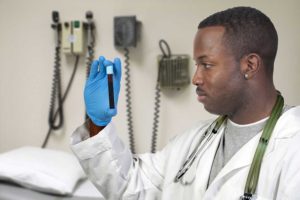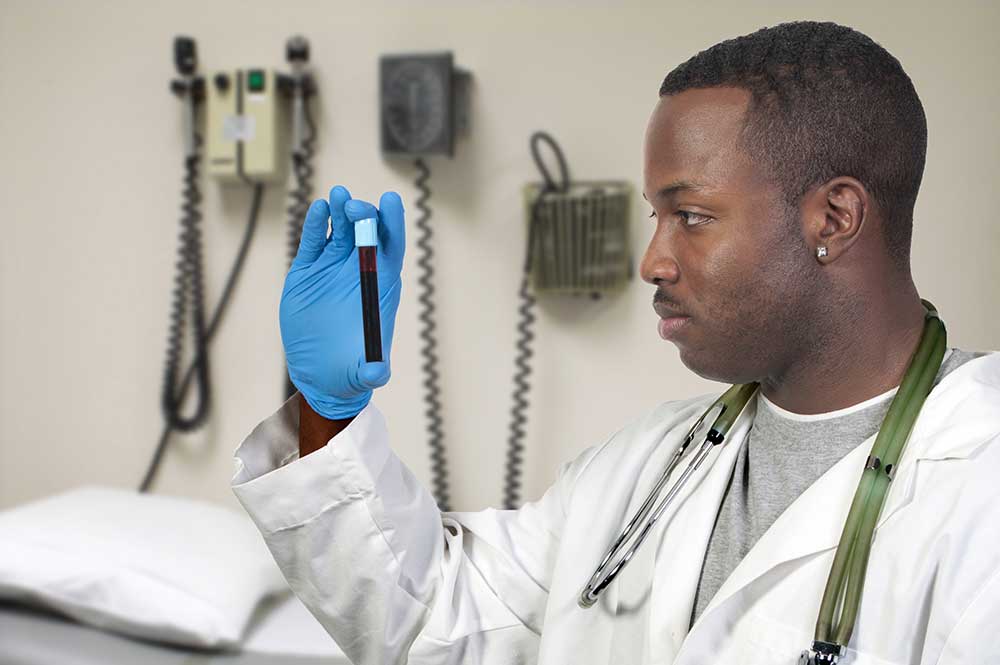Disclaimer: The information on our website is provided for general information purposes only. We make no representations or warranties of any kind, express or implied, about the completeness, accuracy, reliability, suitability or availability with respect to the website or the information contained on our website for any purpose. Any reliance on such information is therefore strictly at your own risk and we are not liable for any damages or losses arising out of or resulting from your reliance on any information contained on our website.
A phlebotomist draws blood from patients for research, testing, transfusions, or donation. They may need to give assistance to a patient in the case of an unexpected adverse reaction during the procedure of drawing blood. Patients may be nervous about having their blood drawn. Phlebotomists explain what to expect so they will be calm and comfortable. Watch a video to learn what a phlebotomist does.
How to Become a Phlebotomist

A post-secondary, non-degree award from a phlebotomy program from a vocational school or community college is usually how you enter this career field. Programs from these schools typically last less than one year and then award a diploma or certificate. Schools provide instruction in laboratory work, anatomy, medical terminology, and physiology. Part of the training for a phlebotomist is learning procedures on how to track, identify, and label blood samples.
Sometimes you can enter this career field with a high school diploma and on-the-job training. However, employers usually prefer to hire a person that carries a professional certification. This certification usually means the potential employee has some clinical experience and training in the classroom and were required to pass an exam and proof of competence in drawing blood. Some states require this certification.
Benefits of Becoming a Phlebotomist
There are also several benefits to being a phlebotomist. First, there is job security as phlebotomists are needed everywhere and are in demand. Second, because there is such demand, another benefit is counting on a stable income that comes with good benefits if working for an employer full-time. Finally, as the training program to become a phlebotomist is less than a year, your entry into the medical field is quicker than most careers in healthcare.
Job Description of a Phlebotomist
A phlebotomist’s primary job is the drawing of blood from a blood donor or patient, so that medical laboratory testing can be performed. Because a patient that is in a medical setting or laboratory may not see anyone other than the phlebotomist it is important for the professional to explain their procedure to the patient. This helps a patient or blood donor to be more relaxed and less nervous.
A phlebotomist must be accurate in verifying the identity of the donor or patient and label the blood vials carefully. They enter the information into a database. They are responsible for the medical instruments, such as blood vials, needles, and test tubes and to ensure they are kept clean and sanitary. Some phlebotomist work at centers for blood drives and in the same way, keep instruments sterilized to avoid complications or infections. Compassion is important for a phlebotomist in addition to dexterity and hand-eye coordination. He or she should also be detail-oriented in this occupation.
In conclusion, becoming a Phlebotomist offers an efficient entry point into the healthcare field with minimal educational requirements. Typically, you can complete a phlebotomy training program in just a few months, allowing you to start your career quickly. Phlebotomists enjoy several benefits, including job stability, competitive salaries, and opportunities to work in hospitals, clinics, and laboratories.
Phlebotomist Career Video Transcript
If you have donated blood or had it drawn for medical tests, you have met a phlebotomist. Phlebotomists draw blood for tests, transfusions, research, or blood donations. They talk with patients and donors to calm them, and help patients recover if needed. Phlebotomists also keep detailed records. They confirm a patient or donor’s identity, label drawn blood for testing or processing, and enter patient information into a database. They assemble and maintain medical instruments such as needles, test tubes, and blood vials.
To avoid causing infection or other complications, phlebotomists must keep their work area and instruments clean and sanitary. Patients appreciate a successful first attempt when having their blood drawn, so phlebotomists work skillfully to maintain patients’ comfort and confidence. Phlebotomists work mainly in hospitals, medical and diagnostic laboratories, blood donor centers, and doctor’s offices. Most phlebotomists work full time, and may work on nights, weekends, and holidays depending on the setting. Most phlebotomists take a short technical training program and then test to become certified. Phlebotomists must be certified to work in some states.
Article Citations
Bureau of Labor Statistics, U.S. Department of Labor, Occupational Outlook Handbook, Phlebotomists.
National Center for O*NET Development. 31-9097.00. O*NET OnLine.

